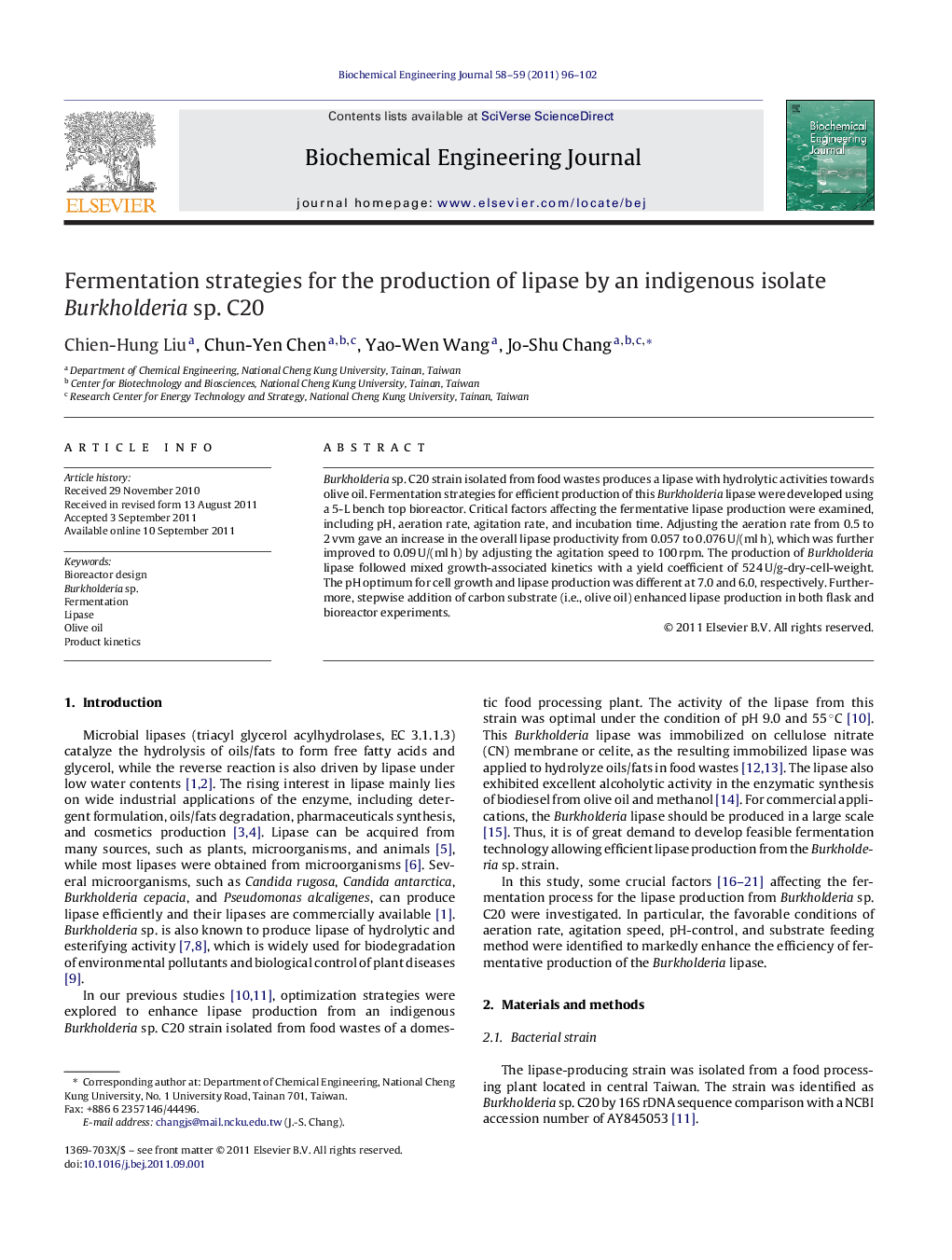| Article ID | Journal | Published Year | Pages | File Type |
|---|---|---|---|---|
| 3690 | Biochemical Engineering Journal | 2011 | 7 Pages |
Burkholderia sp. C20 strain isolated from food wastes produces a lipase with hydrolytic activities towards olive oil. Fermentation strategies for efficient production of this Burkholderia lipase were developed using a 5-L bench top bioreactor. Critical factors affecting the fermentative lipase production were examined, including pH, aeration rate, agitation rate, and incubation time. Adjusting the aeration rate from 0.5 to 2 vvm gave an increase in the overall lipase productivity from 0.057 to 0.076 U/(ml h), which was further improved to 0.09 U/(ml h) by adjusting the agitation speed to 100 rpm. The production of Burkholderia lipase followed mixed growth-associated kinetics with a yield coefficient of 524 U/g-dry-cell-weight. The pH optimum for cell growth and lipase production was different at 7.0 and 6.0, respectively. Furthermore, stepwise addition of carbon substrate (i.e., olive oil) enhanced lipase production in both flask and bioreactor experiments.
► Fermentation technology was developed to produce lipase from indigenous isolate Burkholderia sp. C20. ► Adjusting the aeration rate from 0.5 to 2 vvm led to an increase in the overall lipase productivity from 0.057 to 0.076 U/(ml h), which was further improved to 0.09 U/(ml h) by adjusting the agitation speed to 100 rpm. ► Production of Burkholderia lipase followed mixed growth-associated kinetics with a yield coefficient of 524 U/g-dry-cell-weight. ► Stepwise addition of carbon substrate was effective in enhancing lipase production in the fermentor.
